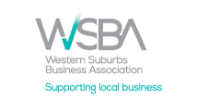Signage is more than just a visual element; it’s a powerful tool that communicates information, guides us, and even promotes businesses. Whether you’re planning a promotional, directional, informational, or regulatory sign, making the right choices can significantly impact its effectiveness. Let’s dive into the key considerations that will guide you towards creating the perfect sign for your needs.
1. Purpose: Unveiling the Sign’s Intent
Before you embark on the design journey, it’s crucial to identify the purpose of your sign. Is it promotional, directional, informational, or regulatory? Each purpose requires a unique approach in terms of size, location, and design. Consider factors such as whether the sign will be indoors or outdoors, and how long it needs to remain current. These fundamental questions will lay the groundwork for your signage strategy.
2. Location: Where Signage Meets Impact
The location of your sign plays a pivotal role in its design and construction. For instance, a storefront sign promoting a business name or logo will likely be large and tailored for outdoor visibility. Material choices vary for indoor and outdoor signs, making it essential to decide on the location early in the process. By doing so, you can ensure your sign is not only aesthetically pleasing but also durable and effective.
3. Demographic: Tailoring Your Message
Understanding your target audience is paramount when designing a sign. Consider demographics such as age, gender, income, religion, race, nationality, and education. This knowledge will help you craft a message that resonates positively and respectfully with your audience. A well-designed sign can communicate more effectively when it speaks directly to the people you want to reach.
4. Text or Graphics: Finding the Right Balance
The choice between text and graphics is a crucial aspect of sign design. Depending on your sign’s purpose, location, and target demographic, you’ll find the perfect balance between text and visuals. Whether it’s a simple, text-only approach, vibrant graphics, or a harmonious blend of both, your decision should align with the preferences and communication style of your audience.
5. Cost: Navigating Your Budget
While there’s no one-size-fits-all answer to the cost question, having clarity on the purpose, location, demographic, and design elements puts you on the right path. Once you’ve answered the initial questions, you can explore various options that align with your budget and timeline.
In conclusion, effective signage is a thoughtful combination of purpose, location, demographic understanding, design choices, and budget considerations. By addressing these key factors, you can create a sign that not only captures attention but also conveys your message in a meaningful way.







